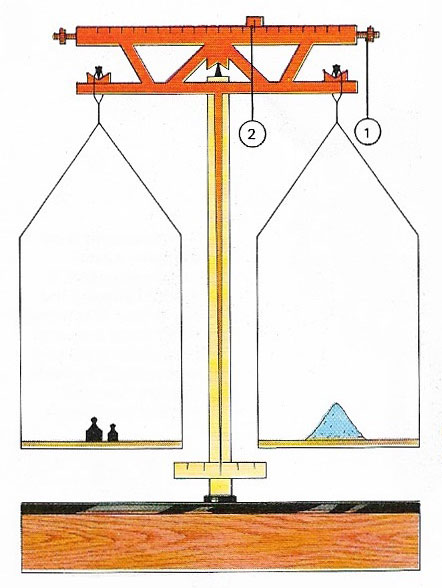balance

Measurement of mass is most accurately carried out by balancing. A high-sensitivity balance used by chemists has screw-weights (1) for fine adjustment. When correctly adjusted, a long, vertical needle in the center of the unit rests exactly over a central zero on a scale at the base of the balance column. To achieve finer measurements than are possible by placing known weights in one pan a "rider weight" is sometimes used. This small weight (2) is designed to slide along a direct-reading scale marked along the top of the balance arm.
A balance is an instrument used for measuring the weight of an object, typically by comparison with objects of known weight. The beam balance or equal-arm balance, known to ancient Egyptians and Mesopotamians, consists of two identical pans hung from either end of a centrally suspended beam. When objects of equal weight are placed in each pan, the beam swings level because the moments of the gravitational forces acting one each object and pan about the central pivot or fulcrum are equal in magnitude and opposite in sense. Other types of beam balance involve fixed weights sliding along or hung below unequal beam arms, but the principle of the balancing of equal and opposite gravitational moments remains the same.
An electronic balance uses an electromagnetic force to restore the balance of a lever arm, the current flowing in the magnet coil being a measure of the mass involved.
The relatively inaccurate spring balance utilizes Hooke's law to determine the weight of the specimen from the extension it produces in a coiled spring, and the much finer torsion balance utilizes the resistance of a wire to being twisted. Chemical microbalances can measure weights as small as 1 microgram.


